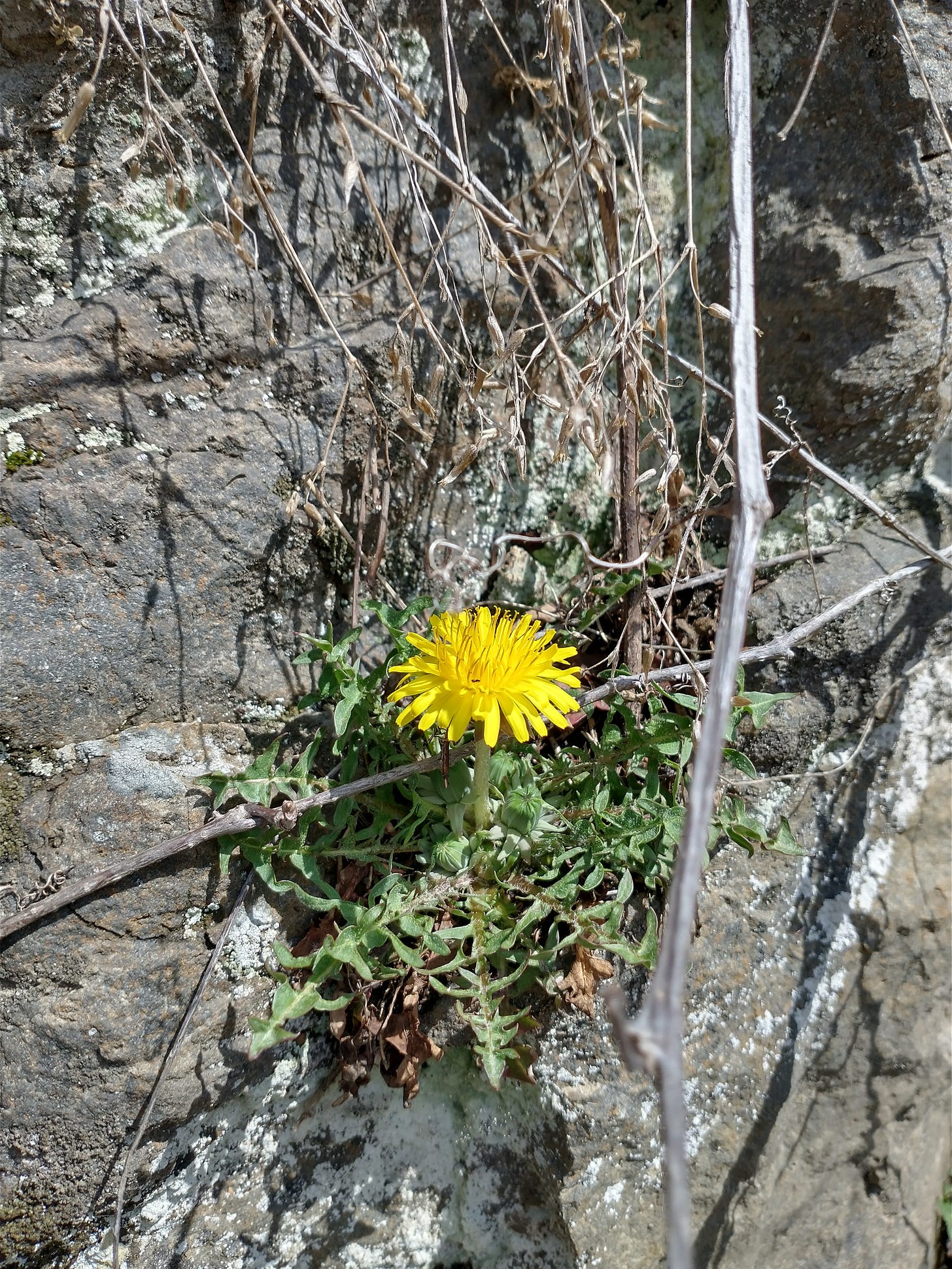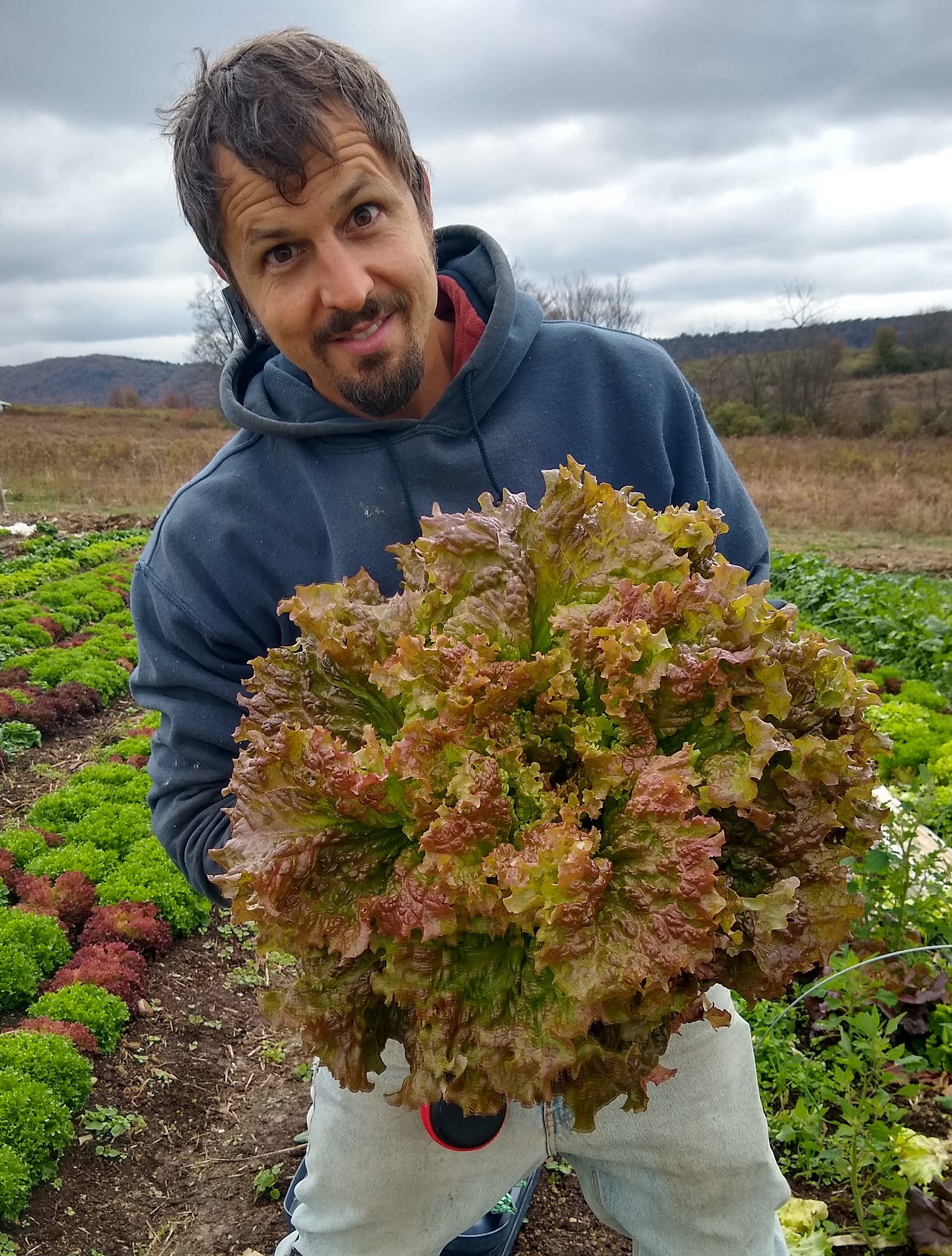Why your 2025 garden should be no-till (Part 2)
Does tillage affect the weed population of your garden?
Weeds are the bane of your gardening existence.
I’ve heard it often, and I know from experience…
Weeds can be enough to make you give up gardening.
Weeds block airflow, compete for water and nutrients, and slow down harvest by making your vegetable plants hard to find or access or by requiring time-consuming sorting in order to get a clean harvest.
I mean, who wants to be separating tiny blades of grass from baby lettuce leaves?
Weeds also reseed themselves, adding thousands of new viable seeds to your soil, ready to emerge given the right conditions.
I’ve mowed off entire sections of my garden and restarted just because they were overrun with weeds.
I’ve seen gardeners give up on their gardens in August or September because their weeds were out of control.
No gardener ever idealizes giving up on their garden in peak season. When I first started learning about no-till gardening methods, I soon realized this could be a solution, at least in part, to the problem of weeds.
Here's why…
Because tillage creates a perfect environment for weeds to germinate and flourish, a no-till garden can reduce weed pressure by reducing the weed seed bank and keeping the soil protected so that weeds won’t emerge.
If you think your vegetables get excited about growing in a loose fluffy soil immediately after being rototilled, you should hear the celebration weeds put on!
Thousands of weed seeds lie waiting just beneath the surface of your soil, ready to emerge at their first opportunity. Many of them have been waiting for years for the perfect conditions, and your tiller just gave them exactly what they need: a loose fluffy soil with no competition!
Bingo! And just like that, within weeks or sometimes days of the tiller passing through, the soil is blanketed with new growth. Covered with weeds. Excited to finally have their opportunity. Eager to cover your bare, fluffy soil.
In addition to creating a loose fluffy soil with no competition, tillage also brings dormant weed seeds from far beneath the surface of the soil, where they may have lain dormant for years, up to the surface where they finally access the oxygen and sunlight they need for germination and growth.
A rototiller can reach 6 or more inches into the soil, and a plow even further, bringing soil from below the surface up to the surface. And with that soil come thousands of weed seeds, transported out of dormancy into perfect germination conditions.
Every time you rototill you’re direct seeding thousands of weeds through the top few inches of a perfectly-prepared soil.
No matter how good a job you do with cultivation, every deep pass of the tiller undoes your work.
By avoiding tillage, you eventually starve the weed seed bank near the surface of your soil, provided you never allow weeds to go to seed. (Keep in mind that some new weed seeds can blow in or be dropped by birds or brought in through your mulch.)
No, it’s not a perfect 100% solution, but even 50 or 80 percent makes a big difference, right?
But in addition to bringing up dormant weed seeds into a loose fluffy surface with no competition, tillage also creates an injury in nature that weeds want to cover.
Let me explain…
Weeds are nature’s band-aid for bare soil.
They are generally annual plants considered recovery species, emerging after soil damage in order to help repair and recover the soil.
Recover and re-cover, literally.
Have you noticed that nature never leaves soil bare long term? Any time plants are removed, whether through tillage or burning or any kind of disturbance, weeds emerge to cover the soil.
Nature is designed to cover the soil, protecting it from erosion and harsh direct sunlight and moisture loss, and weed seeds are always lurking just beneath the surface, ready and waiting to fulfill that mission.
One square foot of soil can have thousands of weed seeds of many different species, each one waiting for the perfect conditions to emerge and protect and nurture the soil.
For example, nitrogen-fixing legumes like clover will sprout more quickly in a dense, compacted soil that needs a nitrogen boost to get plants like grasses established. Once the nitrogen is there, seeds like grasses will emerge to help de-compact the soil and add organic matter, making the soil looser and easier to work with. Or tap rooted weeds like dandelion, dock, or thistle may emerge to reach deep into the soil and break compaction.
Some weeds like lambs quarters or quick weed will grow in high nitrogen soils to help use up the excess nitrogen.
Every weed is there to serve a purpose and accomplish a goal, ultimately the goal of renewing and restoring the soil so that it can support life.
(If you want to nerd out more on different weeds and the purposes they serve, check out books like Weeds and What They Tell Us, and When Weeds Talk.)
But for now, consider this…Every weed emerges in certain conditions in order to fulfill a specific purpose related to restoring or nurturing the soil.
Avoiding tillage never creates the injury to the soil that requires a band-aid in the first place.
By keeping your soil covered and un-disturbed, you never cause the wound that needs recovery.
This is why the best no-till systems not only avoid disturbance, but also utilize mulches or cover crops to keep the soil covered, eliminating the problem that weeds want to solve.
And this is why my 2025 garden will be no-till.
Happy gardening!
-Laverne
P.S. If you haven’t yet read my first post about why your garden should be no-till, read it here.
I want to make gardening easier, more fun, and better able to provide food for your family! If you get value from what I write, consider joining as a paid subscriber.
For only $8.50 a month, you’ll get all the following bonuses…
Monthly Garden To-Do Lists: the exact tasks required each month to keep your garden productive all year long, including…
When to seed each type of vegetable
When and how often to seed for successive or continuous harvests
When to plant for winter and early spring harvests
Basic instructions and tips for each task
And lots more… It’s like having an experienced gardener walk you through every step required for a successful gardening season!
Garden Coaching: Direct access to me and the community chat to ask me all your specific questions and help troubleshoot your garden.
Extra posts with more deep dives & more specific practical gardening instruction than the free posts.
Full access to the archives. Unlimited access to all the gardening content I’ve ever posted on Substack.








No-till is definitely the way to go … our farm is mostly no-till (potatoes and carrots excepted). Once we prep our beds we add a couple of inches of compost on top of the soil which nearly eliminates seeds from sprouting. For long term crops like tomatoes or peppers we use landscape fabric and drill holes for the plants when planting.
Lambsquarters are also a tasty, edible "weed"